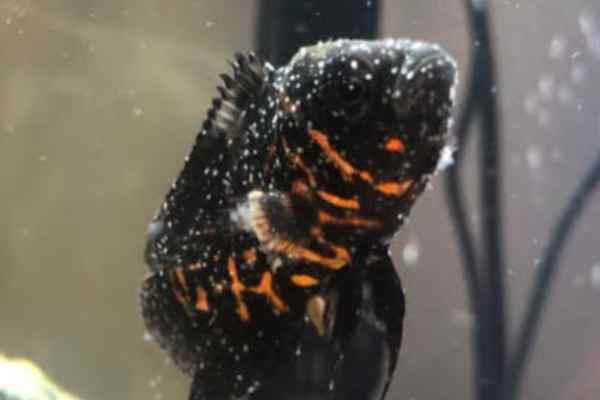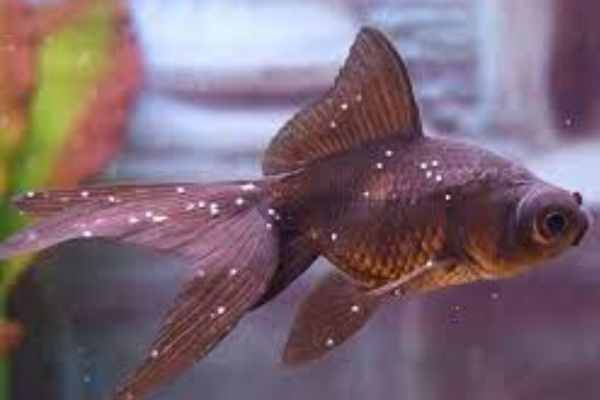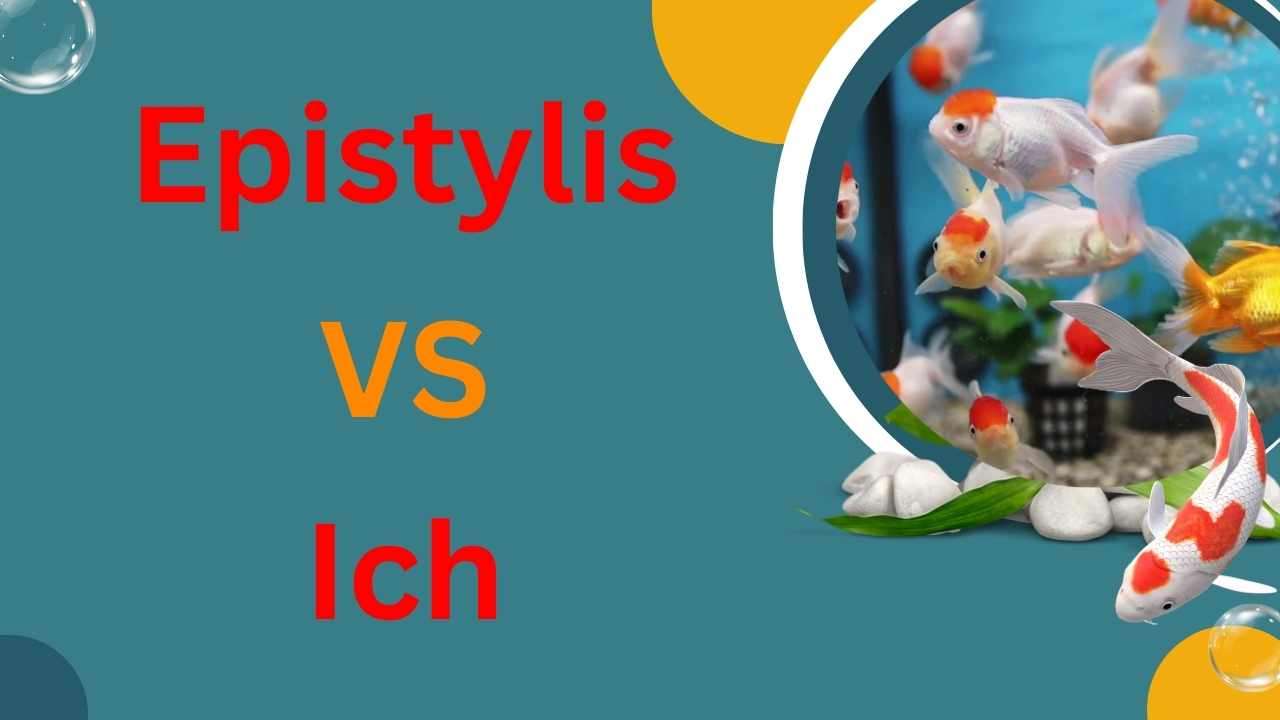Welcome to our blog post on Epistylis vs Ich. In this article, we will explore the differences between these two common fish diseases, providing you with a comprehensive understanding of each and how they impact our aquatic companions. Whether you’re a seasoned fish enthusiast or a beginner, this knowledge will help you in identifying, diagnosing, and treating Epistylis and Ich infections effectively.
Overview of Epistylis
What is Epistylis?
Epistylis is a parasitic protozoan that belongs to the family Epistylidae. It is commonly found in freshwater environments and can attach itself to the skin, fins, and gills of fish.
Characteristics of Epistylis
Epistylis appears as elongated, stalk-like structures with a crown of hair-like projections called cilia. These cilia aid in their attachment and feeding on the host fish.
Common Hosts of Epistylis
Epistylis can affect a wide range of freshwater fish species, including tropical fish, goldfish, and koi. It is particularly prevalent in overcrowded or poorly maintained aquariums and ponds.
How Does Epistylis Affect Fish?
When Epistylis infests a fish, it can cause irritation, tissue damage, and secondary infections. The presence of Epistylis weakens the fish’s immune system, making them more susceptible to other diseases.
Symptoms of Epistylis Infection
Signs of Epistylis infection include the appearance of white or grayish patches on the skin, fins, or gills of fish. Affected fish may also exhibit increased mucus production, scratching against surfaces, and respiratory distress.

Fish Showing Epistylis in Tropical Fish
Overview of Ich
What is Ich?
Ich, scientifically known as Ichthyophthiriusmultifiliis, is a highly contagious protozoan parasite that affects both freshwater and saltwater fish. It is one of the most common diseases found in aquarium and pond fish.
Characteristics of Ich
Ich has a distinctive life cycle, consisting of several stages, including a free-swimming stage called a theront and a feeding stage known as a trophont. It attaches itself to the fish’s skin and feeds on its cells.
Common Hosts of Ich
Ich can infect a wide variety of fish species, ranging from tropical fish to marine fish. It can be particularly devastating in densely populated aquariums and ponds.
How Does Ich Affect Fish?
When Ich attaches itself to a fish, it causes irritation, cell damage, and the formation of small white cysts or spots on the skin and fins. Severe infections can lead to fin deterioration, loss of appetite, and even death.
Symptoms of Ich Infection
Symptoms of Ich infection include the appearance of white spots resembling grains of salt on the fish’s body, fins, and gills. Affected fish may also display increased respiration, lethargy, and flashing behavior.

Fish Showing Ich in Goldfish
Overview Comparison: EpistylisVs. Ich
Here`s a table providing comparison: Epistylis Vs. Ich
| Aspect | Epistylis | Ich |
|---|---|---|
| Type of Organism | Parasitic protozoan | Parasitic protozoan |
| Appearance | Elongated with cilia on stalks | White spots on fish body |
| Common Hosts | Freshwater fish species | Freshwater and marine fish |
| Impact on Fish | Tissue damage, weakened immune system | Tissue damage, stress, and potential death |
| Symptoms | White or grayish patches, increased mucus production | White spots resembling grains of salt, increased respiration |
| Causes | Poor water quality, stress, overcrowding | Introduction of infected fish, stress, poor water quality |
| Transmission | Direct contact, contaminated water | Direct contact, waterborne parasites, contaminated surfaces |
| Diagnosis | Microscopic examination of skin scrapings or gill swabs | Observation of white spots, microscopic examination |
| Treatment | Medications, environmental management | Medications, temperature control, environmental adjustments |
| Prevention | Quarantine procedures, water quality management | Quarantine procedures, temperature control, fish source |
| Life Cycle Differences | Sessile organisms with stalks | Complex life cycle involving multiple stages |
| Pathology Differences | Localized tissue damage, weakened immune system | Widespread tissue damage, formation of white cysts |
| Treatment Differences | Protozoan-targeted medications, environmental management | Medications, temperature control at different stages |
| Misconceptions | Different diseases, not the same | Affects both freshwater and marine fish |
| Case Studies | Epistylis outbreak in a tropical fish tank | Ich infection in a koi pond |
| Tips for Healthy Fish | Clean environment, regular observation, proper nutrition | Clean environment, regular observation, responsible acquisition |
Causes and Transmission
Causes of Epistylis Infection
Epistylis infections are primarily caused by poor water quality, inadequate filtration, overcrowding, and stress. These factors create an environment conducive to the growth and spread of Epistylis.
Transmission of Epistylis
Epistylis can be transmitted through direct contact with infected fish or through contaminated water. It can also be introduced into a tank or pond through contaminated equipment or live food.
Causes of Ich Infection
Ich infections are often the result of introducing infected fish or contaminated water into an aquarium or pond. Stress, poor water quality, and fluctuations in temperature can also trigger an Ich outbreak.
Transmission of Ich
Ich can spread rapidly from fish to fish through direct contact, waterborne parasites, or infected surfaces. It can also be introduced through contaminated nets, plants, or equipment.
Diagnosis
Identifying Epistylis Infection
Diagnosing Epistylis requires careful observation of the fish’s physical appearance and behavior. The presence of white or grayish patches, along with signs of irritation and abnormal behavior, can indicate an Epistylis infection.
Diagnostic Methods for Epistylis
Microscopic examination of skin scrapings or gill swabs can confirm the presence of Epistylis. A trained eye can identify the characteristic cilia and stalk structures under a microscope.
Identifying Ich Infection
Identifying Ich involves recognizing the characteristic white spots on the fish’s body. Additionally, observing the fish’s behavior and respiratory patterns can provide further clues.
Diagnostic Methods for Ich
A simple method for diagnosing Ich involves gently scraping the fish’s skin and observing the scraped material under a microscope. The presence of Ichtrophonts or theronts confirms the infection.
Treatment and Prevention
Treating Epistylis Infections
Medications for Epistylis
Several commercially available medications, such as formalin-based treatments or malachite green, can effectively treat Epistylis infections. Follow the instructions provided by the manufacturer and consult with a fish veterinarian if needed.
Environmental management
Improving water quality, maintaining proper filtration, and reducing overcrowding can help prevent and control Epistylis outbreaks. Regular water changes and proper maintenance of aquarium or pond equipment are also essential.
Natural remedies for Epistylis
In some cases, natural remedies like salt baths, increased aeration, and herbal treatments may help in combating Epistylis. However, their effectiveness may vary, and it is important to research and consult with experts before attempting such treatments.
Preventing Epistylis infections
Quarantine procedures
Implementing a quarantine period for new fish or plants can help prevent the introduction of Epistylis into a main aquarium or pond. This allows for observation and treatment of any potential infections before introducing the fish to the main population.
Water Quality Management
Maintaining optimal water parameters, including temperature, pH, and ammonia levels, can help prevent the onset of Epistylis infections. Regular testing and proper filtration are essential for creating a healthy aquatic environment.
Stress Reduction Techniques
Reducing stress in fish can boost their immune system and make them less susceptible to Epistylis and other diseases. Providing appropriate hiding spots, minimizing sudden changes in the environment, and offering a balanced diet can all contribute to stress reduction.
Treating Ich Infections
Medications for Ich
Effective medications for treating Ich include copper-based treatments, malachite green, or formalin-based solutions. It is crucial to carefully follow the dosage instructions and closely monitor the fish during treatment.
Environmental management
Raising the temperature of the water gradually to around 86°F (30°C) can accelerate the life cycle of Ich, making it more susceptible to medication and shortening the duration of treatment. However, this method should be approached with caution, as sudden temperature changes can stress the fish.
Heat treatment for Ich
In cases where raising the temperature is not feasible, alternative methods like using heat packs or quarantine tanks equipped with heaters can be employed to treat Ich. Again, professional guidance is recommended.
Preventing Ich Infections
Quarantine Procedures
Quarantining new fish before introducing them to the main population is crucial to prevent Ich outbreaks. During the quarantine period, closely monitor the fish for any signs of infection and administer appropriate treatments if necessary.
Water Temperature Control
Maintaining stable water temperatures within the recommended range for the specific fish species helps prevent stress and reduces the risk of Ich outbreaks. Use a reliable aquarium heater and monitor the temperature regularly.
Proper Nutrition
Providing a balanced and nutritiousdiet to fish is essential for maintaining their overall health and immune system. A well-nourished fish is less susceptible to infections like Ich. Offer a varied diet consisting of high-quality commercial fish food, supplemented with occasional treats such as live or frozen foods.
Comparative Analysis
Differences between Epistylis and Ich
While both Epistylis and Ich are parasitic infections affecting fish, they have notable differences in their life cycles, pathology, treatments, and prevention strategies.
Life Cycle Differences
Epistylis primarily exists as sessile organisms with stalks, whereas Ich has a complex life cycle involving both free-swimming and feeding stages. Understanding these distinctions is crucial for implementing targeted treatment approaches.
Pathology Differences
Epistylis attaches itself externally to the fish’s body, fins, or gills, causing localized tissue damage and weakening the immune system. In contrast, Ich burrows into the fish’s epithelial cells, resulting in the formation of characteristic white cysts and more widespread tissue damage.
Treatment Differences
Epistylis can be treated with medications specifically designed to target protozoan parasites. Environmental management, such as improving water quality, also plays a crucial role. On the other hand, Ich requires a combination of medication, environmental adjustments, and temperature control to effectively eliminate the parasite at different stages of its life cycle.
Prevention Strategies
Preventing Epistylis outbreaks focuses on maintaining optimal water conditions, reducing stress, and implementing proper quarantine procedures. Preventing Ich requires similar measures, along with specific attention to temperature control and avoiding the introduction of infected fish.
Common Misconceptions
Misconception #1: Epistylis and Ich are the same disease Although both Epistylis and Ich are parasitic infections, they are caused by different organisms and have distinct characteristics. It is essential to understand their differences to ensure accurate diagnosis and appropriate treatment.
Misconception #2: Epistylis and Ich only affect freshwater fish Epistylis and Ich can affect both freshwater and saltwater fish species. They are prevalent in various aquatic environments and can cause significant harm if left untreated, regardless of the fish’s habitat.
Misconception #3: There is a one-size-fits-all treatment for Epistylis and Ich Effective treatment for Epistylis and Ich involves a multifaceted approach, considering factors such as the fish species, severity of infection, and environmental conditions. There is no universal treatment, and it is crucial to tailor the treatment to the specific circumstances.
Case Studies
Case study 1: Epistylis Outbreak in a Tropical Fish Tank
In this case study, an aquarium owner observed white patches on the skin and fins of their tropical fish. The symptoms indicated an Epistylis infection. The treatment approach involved using a recommended protozoan medication, improving filtration, and performing regular water changes. The outcome was successful, with the fish recovering and no further signs of infection. The case emphasized the importance of prompt diagnosis and comprehensive treatment.
Case study 2: Ich Infection in a Koi Pond
A koi pond owner noticed white spots on their koi, along with increased respiratory distress and flashing behavior. These symptoms indicated an Ich infection. The treatment approach involved raising the water temperature to accelerate the Ich life cycle and using a suitable medication. Additionally, quarantine procedures were implemented for new fish introductions. The treatment successfully eradicated the Ich infestation, and the case highlighted the significance of temperature control in Ich management.
Tips for Healthy Fish
Maintaining a Clean and Healthy Environment
Regularly clean the aquarium or pond, remove debris, and perform water changes as needed. Proper filtration, adequate aeration, and the use of live plants contribute to a healthy aquatic environment.
Regular Observation and Monitoring
Frequently observe your fish for any signs of illness, changes in behavior, or physical abnormalities. Early detection enables prompt intervention and prevents the spread of diseases.
Proper Nutrition and Feeding Practices
Offer a balanced diet tailored to the nutritional needs of your fish. Provide a variety of food options, including commercial fish food, live or frozen foods, and vegetables, to ensure they receive essential nutrients.
Responsible Fish Acquisition
When acquiring new fish, practice responsible sourcing by purchasing from reputable sources that maintain healthy fish stocks. Quarantine new additions to prevent the introduction of diseases into existing populations.
Frequently Asked Questions (FAQs)
Are Epistylis and Ich the same disease?
Answer: No, Epistylis and Ich are two distinct diseases caused by different organisms. Epistylis is a parasitic protozoan that attaches to fish, while Ichthyophthiriusmultifiliis (Ich) is another parasitic protozoan that causes white spots on the fish’s body.
Can Epistylis and Ich infect both freshwater and saltwater fish?
Answer: Epistylis primarily affects freshwater fish, while Ich can infect both freshwater and saltwater fish. It is important to be aware of the specific diseases that can affect the fish in your particular environment.
How can I prevent Epistylis and Ich infections in my fish?
Answer: Prevention strategies include maintaining optimal water quality, avoiding overcrowding, implementing quarantine procedures for new fish, and providing a balanced diet. Regular observation and monitoring of your fish can also help detect any early signs of infection.
What are the common symptoms of Epistylis and Ich infections?
Answer: Symptoms of Epistylis infection include white or grayish patches on the fish’s skin, increased mucus production, and signs of irritation. Ich infections are characterized by the appearance of white spots resembling grains of salt on the fish’s body, fins, and gills, along with increased respiration and abnormal behavior.
How can I diagnose Epistylis and Ich in my fish?
Answer: Diagnosis involves careful observation of the fish’s physical appearance and behavior. Microscopic examination of skin scrapings or gill swabs can help confirm the presence of Epistylis. For Ich, the presence of white spots on the fish’s body, along with characteristic behavior, is often indicative of the infection.
What should I do if my fish have Epistylis or Ich?
Answer: If you suspect your fish have Epistylis or Ich, it is recommended to consult with a fish veterinarian or aquatic expert. They can provide appropriate treatment options, such as medications and environmental management techniques, tailored to the specific disease and your fish’s needs.
Can natural remedies be effective in treating Epistylis and Ich?
Answer: Natural remedies, such as salt baths, increased aeration, and herbal treatments, may have some effectiveness in treating Epistylis and Ich. However, their efficacy can vary, and it is important to research and consult with experts before attempting natural remedies.
Why is early detection and prompt treatment important for Epistylis and Ich infections?
Answer: Early detection and prompt treatment of Epistylis and Ich infections are crucial to prevent the spread of the diseases and minimize the damage to fish. Delayed or untreated infections can weaken the fish’s immune system, lead to further complications, and even result in mortality.
Conclusion
In conclusion, understanding the differences between Epistylis and Ich is crucial for fish enthusiasts and aquarists. These common fish diseases can have detrimental effects if left untreated. By recognizing the signs, implementing accurate diagnosis methods, and applying appropriate treatments, we can effectively manage and prevent the spread of Epistylis and Ich infections. Remember to maintain a clean environment, provide proper nutrition, and conduct regular observations to ensure the overall health and well-being of your fish. Continuous research and learning in the field of fish health will further enhance our ability to care for these magnificent aquatic creatures.

